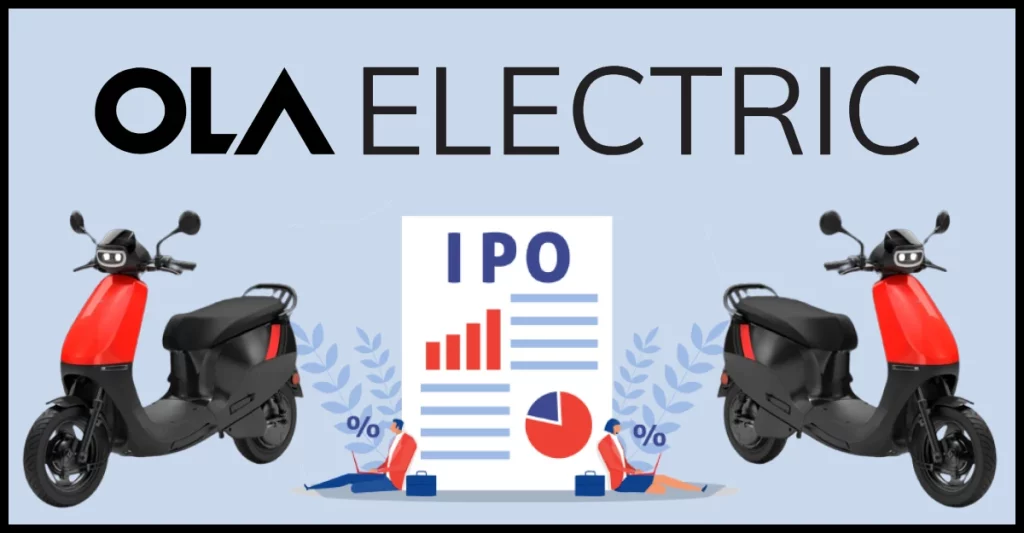Ola Electric IPO has become the most anticipated climax of the Indian EV market. After all, Ola Electric, the big player in electric vehicles in India, is getting ready for its super exciting Initial Public Offering (IPO)! It’s like the VIP party everyone’s talking about.
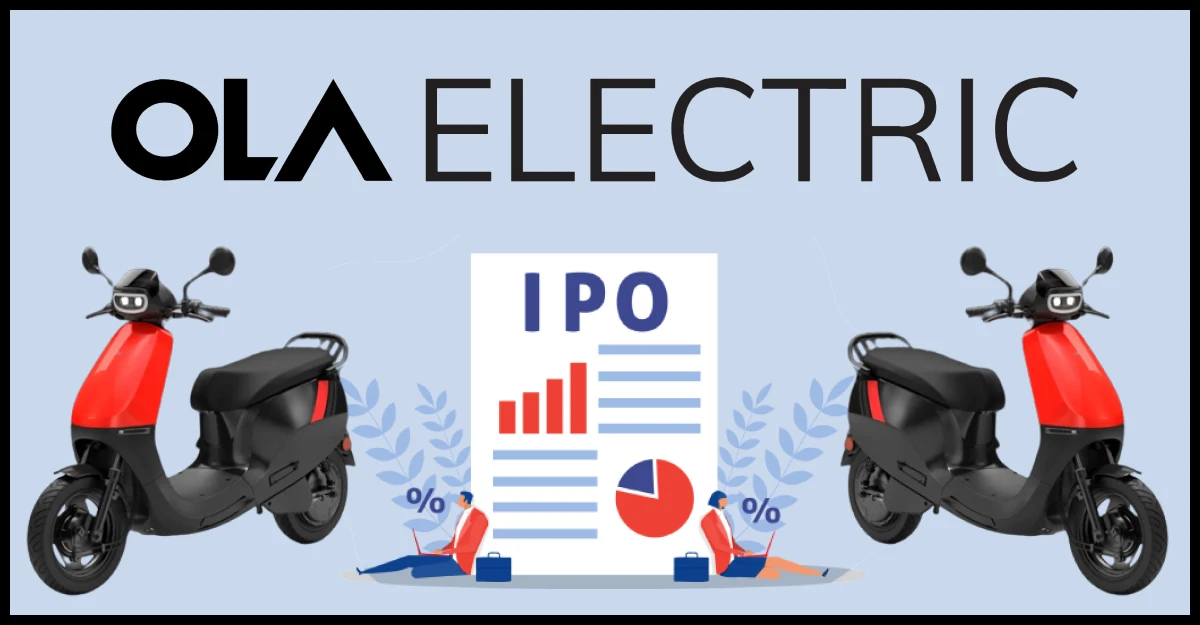
Guess what?
Ola is already rocking a 40% market share in two-wheelers, but here’s the twist – the road ahead for investors is a bit like a rollercoaster ride. Challenges like money matters, tough competition, and tricky government rules are making things interesting.
All these factors boil down to one critical question- Will Ola Electric IPO be a success?
Let’s analyse it through a detailed breakdown of the Ola Electric IPO.
Keep reading!
(A) Story So Far: Exciting News on Ola Electric IPO
Every year we see IPOs. Then why all the buzz about the Ola Electric IPO? You must be wondering.
Well, the IPO is Ola’s golden ticket to becoming even more powerful. It’s like getting a treasure chest to fund cool stuff, including a brand-new manufacturing hub in Tamil Nadu. But, before you hit the “subscribe” button, let’s dive into the details of Ola’s IPO story.
Ola Electric spilled the beans by sharing its Draft Red Herring Prospectus (DRHP) with the Securities and Exchange Board of India (SEBI) on December 22.
The plan?
Releasing fresh shares worth up to ₹5,500 crore and an offer for sale (OFS) with a bunch of 95,191,195 shares, each with a face value of ₹10.
Hold on, there’s more!
Bhavish Aggarwal, the brains behind Ola Electric, is planning to sell about 47.4 million shares from this SoftBank Group-supported electric scooter wonder.
So, buckle up for this thrilling ride in the electric vehicle world – there’s a lot more excitement coming your way!
(B) Unveiling the Details of DRHP (Draft Red Herring Prospectus) of Ola Electric IPO
First of all, let’s go through the overview of DRHP submitted by Ola Electric
| DRHP Filed | December 2023 |
| IPO Details | Pre-IPO Placement: Rs.1,100 crore |
| Fresh Issue of Shares: Rs.5,500 crore | |
| Offer for Sale: 9,51,91,195 Equities | |
| Proceeds Split | Rs.1,226 crore capital expenditure to be incurred by subsidiary, Ola Cell Technologies |
| Rs.800 crore as repayment in full or part, of the indebtedness incurred by its subsidiary OET | |
| Rs.1,600 crore for research and product development | |
| Rs.350 crore for organic growth initiatives | |
| Up to 25% of the net proceeds for general purposes | |
| Issue Type | Book Built |
| Issue Price Band | NA |
| Face Value | Rs.10 |
| IPO Listing at | NSE, BSE |
Now, let’s dive into the details-
(B.1) Pre-IPO Share Structure
Before Ola Electric’s IPO, understanding the share dynamics is crucial. The total outstanding shares are an impressive 3.68 billion, derived from 1.95 billion shares and an additional 1.73 billion through CCCS Conversion. Out of this, 95 million equity shares are earmarked for the IPO.
(B.2) Founder’s Divestment Details
Founder and promoter Aggarwal plans to divest a noteworthy portion, totaling 47 million shares. This divestment represents a modest 3.4% of his overall holdings. Other investors in the mix will witness dilution, with their percentages ranging from 2.3% to 2.94%.
(B.3) Ola Electric’s Business Model Platforms
Ola Electric’s business model, as outlined in the Draft Red Herring Prospectus (DRHP), is built on three key scalable platforms-
- R&D and Technology platform
- Adaptable manufacturing and supply chain platform
- D2C omni channel distribution platform
(B.4) Ambitious Plans for Market Expansion
To maintain dominance and enhance market penetration, Ola Electric has unveiled ambitious plans, including-
- Constructing the largest “future factory” with an annual production capacity of 1 million cars and 10 million two-wheelers.
- Establishing the largest battery cell manufacturing facility with a substantial 100 GWh capacity
- Setting up an R&D Innovation Centre in Bengaluru
- Introducing scooters, motorcycles, and cars with impressive specifications, such as a range of 500 km per charge, the ability to charge up to 80% in 1 hour, and acceleration from 0-100 km/h in 5 seconds
- Expanding its network of retail experience centres nationwide, targeting 1,000 by August 2023
(B.5) Key Considerations for Public Issue
While Ola Electric’s plans are promising, many are still in the conceptual stage. The pivotal question is at what price band the company will set for its public issue, a crucial factor in attracting high subscriptions from retail investors.
(B.6) Valuation and Funding History
Ola Electric’s valuation stood at $5.4 billion in October 2023. The company raised $385 million in debt and equities from SBI and Temasek, accumulating a total of over $1.5 billion from various marquee investors.
(B.7) Analysts Predictions
Valuation estimates post-IPO differ among analysts. Three analysts suggest a value ranging from $7 billion to $7.5 billion, while two foresee a valuation in the range of $6 billion to $7 billion. Further clarity is expected with pre-IPO placements. Analysts unanimously predict a favourable reception for Ola Electric’s IPO if launched in a timely manner.
As Ola Electric gears up for its IPO, exploring these intricacies provides a comprehensive picture of its market entry and potential impact.
(C) Ola Electric Financials: A Closer Look
Snapshot of Ola Electric’s Financials (Rs.Million)
| Revenue Sources | 2023 | 2022 |
| From Operations | 26,309.00 | 3,734.23 |
| Other Income | 1,517.70 | 828.37 |
| Total Income | 27,826.97 | 4,562.60 |
| Loss Before Tax | -14,720.79 | -7,841.50 |
A Look into Expense Breakdown (Rs.Million)
| Expenses | 2023 | 2022 |
| Cost of Materials Consumed | 25,047.92 | 5,849.34 |
| Purchase of Stock-in-Trade | 1,392.61 | 561.81 |
| Change in Inventories | -736.44 | -1,602.15 |
| Employee Benefit Expense | 4,267.25 | 2,824.80 |
| Other Expenses | 8,862.41 | 4,104.32 |
| Total Expenses | 38,833.75 | 11,738.12 |
| Loss before Finance Costs, Depreciation, Amortisation, and Tax Expense | -11,006.78 | -7,175.52 |
| Finance Costs | 1,079.17 | 176.18 |
| Depreciation and Amortisation Expense | 1,670.64 | 489.8 |
Despite losses, Ola Electric is aggressively going for an IPO! Do you think investors will be interested in a loss making company?
Here is the twist!
The loss figures aren’t a sign of failure for Ola Electric. We all know that electric vehicles are the future of the automotive industry. Hence, the success of Ola Electric’s IPO carries profound implications, both financially and strategically. It stands as a litmus test for investor confidence in the EV market and the viability of Ola Electric’s business model.
A prosperous IPO will not only injects crucial capital into Ola Electric’s expansion plans but also elevates investor sentiment towards the broader EV sector in India. The IPO journey of Ola Electric is not just a financial milestone but a pivotal moment shaping the future landscape of electric mobility in the country.
Navigating the Challenges in the EV Market
The electric vehicle (EV) market in India holds immense promise but comes with its share of challenges. Ola Electric encounters a significant hurdle in the form of government subsidy fluctuations, directly impacting EV sales.
The recent reduction in subsidies, part of the Faster Adoption and Manufacturing of (Hybrid &) Electric Vehicles II scheme, has caused a slight dip in the adoption of electric two-wheelers.
Despite these challenges, Ola Electric has showcased remarkable growth, with sales volumes tripling in FY23.
(D) Evaluating Ola IPO Price: Overvalued or Undervalued?
The looming Ola IPO prompts questions about its price. Analysts argue that even at a $7 billion valuation, Ola might be overpriced. Examining Ola Electric’s financials reveals FY23 sales of around INR 2,600 Crores. With a valuation ranging from $6 billion to $7 billion, the company could enter the IPO with a market cap-to-revenue ratio of 18x to 21x.
(D.1) Comparing the market ratios with the peers in EV Industry
A crucial point of consideration is the market cap-to-revenue ratio when compared to industry peers. Notably, Bajaj and TVS are trading at lower ratios of 5x and 3x, respectively. Even a comparison with Ather, valued at around $1.3 billion (approximately INR 10,000 Crores) with FY23 sales of INR 1,800 Crores, places Ather at a 5x Mcap/Sales ratio. This raises questions about Ola Electric’s valuation in relation to its competitors.
(D.2) Competitive Landscape
Sales data from the Society of Indian Automobile Manufacturers (SIAM) for electric vehicles in FY22 and FY23 suggest Ola Electric’s sales volume is growing. However, competitors like TVS, Bajaj, and Ather are narrowing the gap.
TVS Motors, for instance, sold 82,109 electric two-wheelers in FY23 compared to Ola Electric’s 1.52 Lakh. In FY24, TVS sold over 1.26 Lakh electric two-wheelers, capturing 20% of the market, up from 11% the previous year.
Bajaj, with an upcoming revamped EV Chetak, has seen its market share grow from 5% in FY23 to 10% in FY24. Hero MotorCorp’s VIDA is also expected to gain more market share.
(D.3) Strategic Advantage: Unique Position as a Native EV Company
Ola Electric’s Draft Red Herring Prospectus (DRHP) draws comparisons with other automobile makers like Bajaj, TVS, and Hero for financial insights. Some analysts argue that being a native EV company gives Ola Electric a significant advantage. This competitive edge may play a crucial role in how investors perceive the company’s valuation and growth potential.
As Ola Electric navigates the IPO landscape, the debates around its pricing reflect the complexities of the electric vehicle market and the company’s standing among industry peers. The road ahead will undoubtedly be closely monitored by investors and industry enthusiasts alike.
(E) Top 10 Highlights of Ola Electric IPO: Things You Must Know
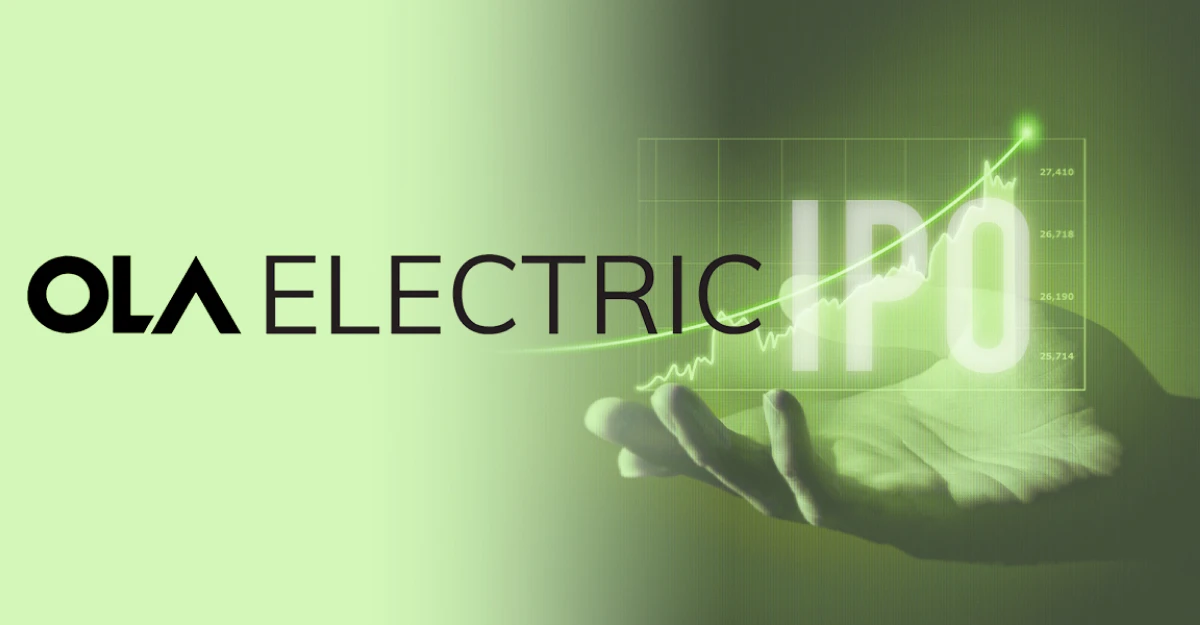
Below are 10 things you must know about Ola Electric IPO-
(E.1) Investor Allocations
The Ola IPO adopts a book-building approach, delineating specific allocations: 75% for qualified institutional buyers (QIBs), up to 15% for non-institutional investors (NIIs), and a maximum of 10% for retail individual bidders. This ensures a balanced and inclusive participation from diverse investor categories.
(E.2) Ambitious Funds Target
The proposed issue comprises a fresh equity share release of up to ₹5,500 crore and an offer for sale (OFS) of 95,191,195 equity shares at ₹10 face value. Founder Bhavish Aggarwal is set to sell approximately 47.4 million shares, with a strategic aim to target a valuation between $7-8 billion by early 2024.
(E.3) Stake Divestment Landscape
Beyond Bhavish Aggarwal, various entities, including Indus Trust, Kaha Wave Ventures, Alpine Opportunity Fund, DIG Investment Internet Fund, MacRitchie Investments, Matrix Partners India Investments, SVF II Ostrich, and Tekne Private Ventures XV, are actively divesting stakes. This collective participation adds depth to the IPO and reflects a broader spectrum of investors.
(E.4) Funds Utilization Strategy
The DRHP outlines a meticulous allocation plan for the funds raised:
- ₹1,226.4 crore for Ola Cell Technologies’ Gigafactory project
- ₹1,600 crore for research and development (R&D) investments
- ₹350 crore for organic growth initiatives and general corporate purposes
- ₹800 crore to repay/pre-pay debts of Ola Electric Technologies (OET)
(E.5) Expert Book Managers
Ensuring a robust IPO journey, the book-running lead managers include Kotak Mahindra Capital, Citigroup Global Markets India, BofA Securities India, Goldman Sachs (India) Securities, Axis Capital, ICICI Securities, SBI Capital Markets, and BOB Capital Markets. Link Intime India is entrusted as the registrar of the offer, overseeing the entire process.
(E.6) Financial Dynamics: Navigating Debts
Anticipating continued operational losses in the short term, Ola Electric strategically focuses on business expansion and product portfolio growth. This approach acknowledges the evolving dynamics of the electric vehicle market.
(E.7) Acknowledgment of Potential Short-Term Losses
Ola Electric recognizes the potential for short-term operating losses but remains steadfast in its commitment to invest in business expansion and diversification. An estimated ₹1,600 crore is dedicated to Research and Development (R&D) over the next three years, emphasising long-term innovation.
(E.8) Stellar Sales Performance
November 2023 marked a pivotal moment for Ola Electric, achieving its highest-ever sales with 30,000 units, capturing an impressive 35% market share. Since its inception in December 2021, the company has sold over 300,000 electric vehicles, with December alone contributing 9,841 e-scooters to a total FY24 sales figure exceeding 1.8 lakh vehicles.
Ola Electric has emerged as a leader in Indian electric 2-wheelers (E2Ws) and original equipment manufacturers (OEMs) based on revenue from E2W sales in FY23.
(E.9) Striking Revenue Surge
In the fiscal year 2023, Ola Electric witnessed a substantial surge in revenue from operations, reaching ₹2,630.93 crore compared to ₹373.42 crore in the preceding year. The quarterly report for June 30, 2023, revealed revenue from operations at ₹1,242.75 crore, highlighting a robust financial performance.
(E.10) Adhering to Regulations: Penalty Disclosure
In a demonstration of regulatory adherence, Ola Electric disclosed a payment of ₹15 lakh as a penalty to the Ministry of Road Transport and Highways (MoRTH). This penalty followed an incident in March 2022, where one of its S1 scooters caught fire in Pune. The transparent disclosure reflects Ola Electric’s commitment to regulatory compliance and safety standards.
The Ola IPO journey is not merely a financial milestone; it’s a narrative of strategic decisions, financial resilience, and a commitment to shaping the future of electric mobility.
(F) Unlocking the road ahead of Ola Electric IPO
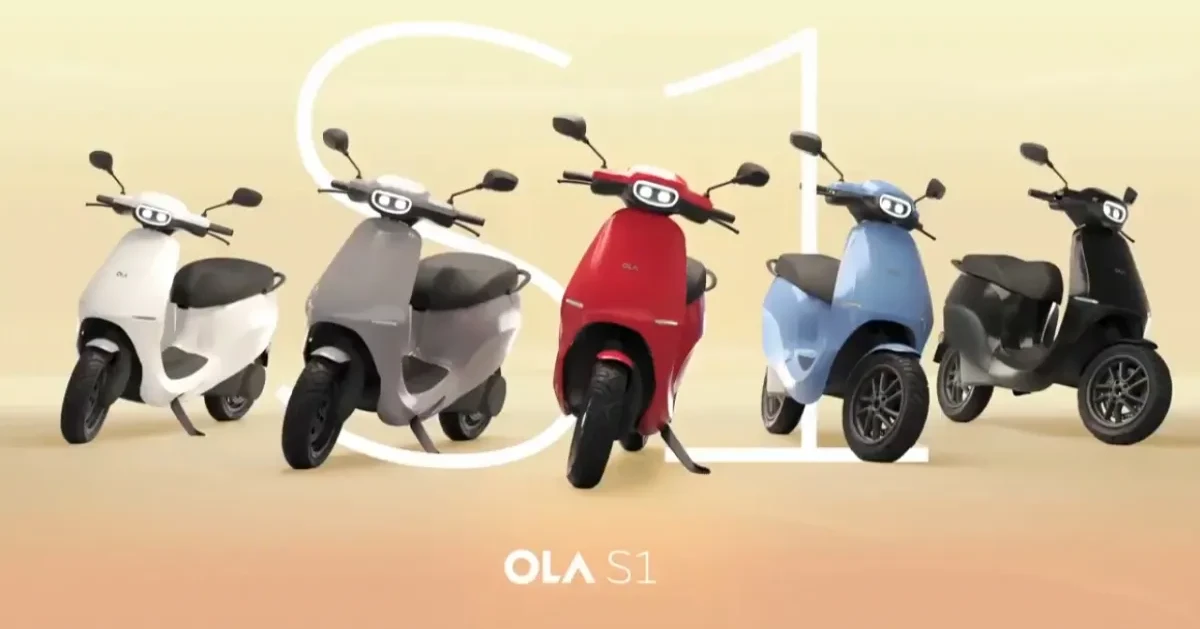
Ola Electric is gearing up for a game-changing move – its $1 billion Initial Public Offering (IPO). This not only reflects confidence in India’s electric vehicle (EV) market but also marks a pivotal moment set to reshape the industry. Let’s dive into the details!
(F.1) Ola Electric IPO Ambitions
Tushar Kansal, founder of Kansaltancy Ventures, sees Ola Electric’s IPO as a chance to lead the EV charge. By going public, Ola aims to turbocharge its expansion, product development, and market reach. The IPO isn’t just about stocks; it’s about setting the bar high for competitors and shaping the future of electric mobility in India.
(F.2) Funds on the Horizon
How does Ola plan to fund this grand venture? The IPO blueprint includes issuing fresh shares valued at ₹5,500 Crores and offering up to 95 million existing equity shares for sale (OFS). Before the IPO dance begins, Ola is eyeing an additional ₹1,100 Crores through pre-IPO placement offers.
(G) Navigating the Risks: Every Investor Should Know
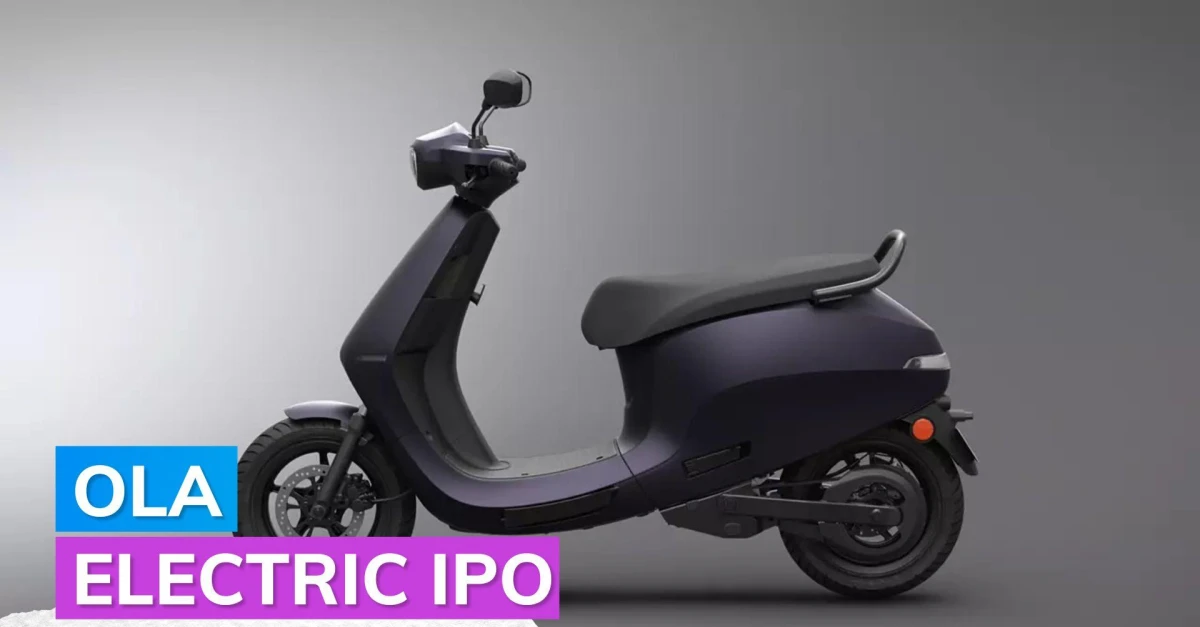
Ola Electric’s journey, however, isn’t without challenges. Let’s zoom in on the potential road bumps.
- Revenue Risk: Ola heavily relies on a limited range of electric scooters, making it vulnerable to market shifts. The lack of product diversification could impact sales if demand for specific models changes or if competition heats up.
- Global Dependencies: Importing resources like lithium for battery production exposes Ola to global supply chain disruptions and price fluctuations. Any significant hiccups in the supply chain could disrupt production and sales.
- Government Subsidy Dependency: Ola’s affordability is closely tied to government subsidies. Changes in policies, such as those under the Faster Adoption and Manufacturing of Electric Vehicles (FAME) subsidy or production-linked incentive (PLI) scheme, could impact prices and demand.
- Fierce Competition: With giants like Hero Electric, Bajaj Auto, Tesla, and Ather Energy entering the EV arena, Ola faces intense competition. Price wars and shrinking profit margins could be on the horizon.
- Technological Competition: In the fast-evolving EV landscape, staying ahead requires constant R&D investment. Ola needs to keep pace with advancements in battery range, charging speeds, and vehicle efficiency to avoid falling behind.
- Brand Image and Safety Concerns: Any safety-related incidents, like the one in which an Ola scooter caught fire, could dent the company’s image. Building and maintaining consumer confidence is crucial in the competitive EV market.
- Financial Terrain: While Ola Electric’s revenue from operations skyrocketed to ₹2,630.93 Crores in FY23, losses nearly doubled to ₹1,472 Crores. The IPO’s success hinges on Ola’s ability to manage its financial terrain effectively.
(H) Ray of hope: Potential Tailwinds for Ola Electric IPO
By seeing the risks, you must have got a bit disappointed about the Ola Electric IPO. Surprisingly, there are some positive aspects too that are no less than a lucrative opportunity for Ola Electric Company-
- Revenue Surge: Despite challenges, Ola Electric’s revenue from operations soared more than sevenfold to ₹2,630.93 Crores in FY23. This upward trajectory bodes well for the company’s financial prospects.
- Growing EV Market: The Indian EV market is on the brink of exponential growth, with projections suggesting a tenfold increase by 2030. Ola stands poised to capitalise on this burgeoning opportunity.
- Vertical Integration: Ola’s move towards vertical integration, manufacturing key components like batteries and motors, could lead to cost reductions, improved product quality, and enhanced control over the supply chain.
- Government Support: The Indian government’s push for electric vehicle adoption through subsidies, tax benefits, and policy initiatives creates a favourable environment for Ola’s growth plans.
In short, Ola Electric’s $1 billion IPO is more than just a financial event; it’s a journey shaping the future of India’s electric mobility landscape. As the excitement builds, investors are poised for a ride filled with challenges and opportunities.
Note: Do you know which Automobile Company is leading the electric two-wheeler race? Read the article to find out!
(I) Final Thoughts: Will Ola Electric IPO be a Success?
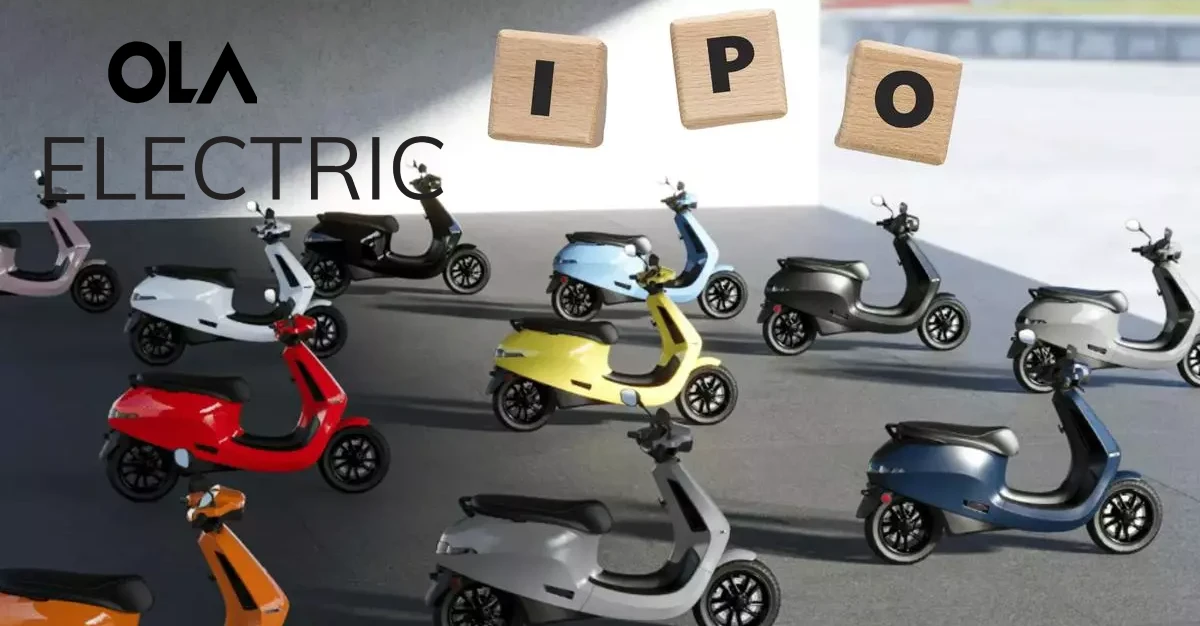
In the exciting journey toward Ola Electric IPO success, optimism fuels the ride. With strategic plans, growing revenues, and a dynamic EV market, Ola steers towards triumph. Despite challenges like competition and financial intricacies, the company’s commitment to innovation and government support signals a promising expedition.
As investors gear up for the electrifying IPO, the question isn’t just “Will Ola Electric IPO be a success?” but rather an optimistic anticipation of victory in India’s electric future.
The road ahead appears charged with possibilities, setting the stage for Ola Electric’s potential triumph!

